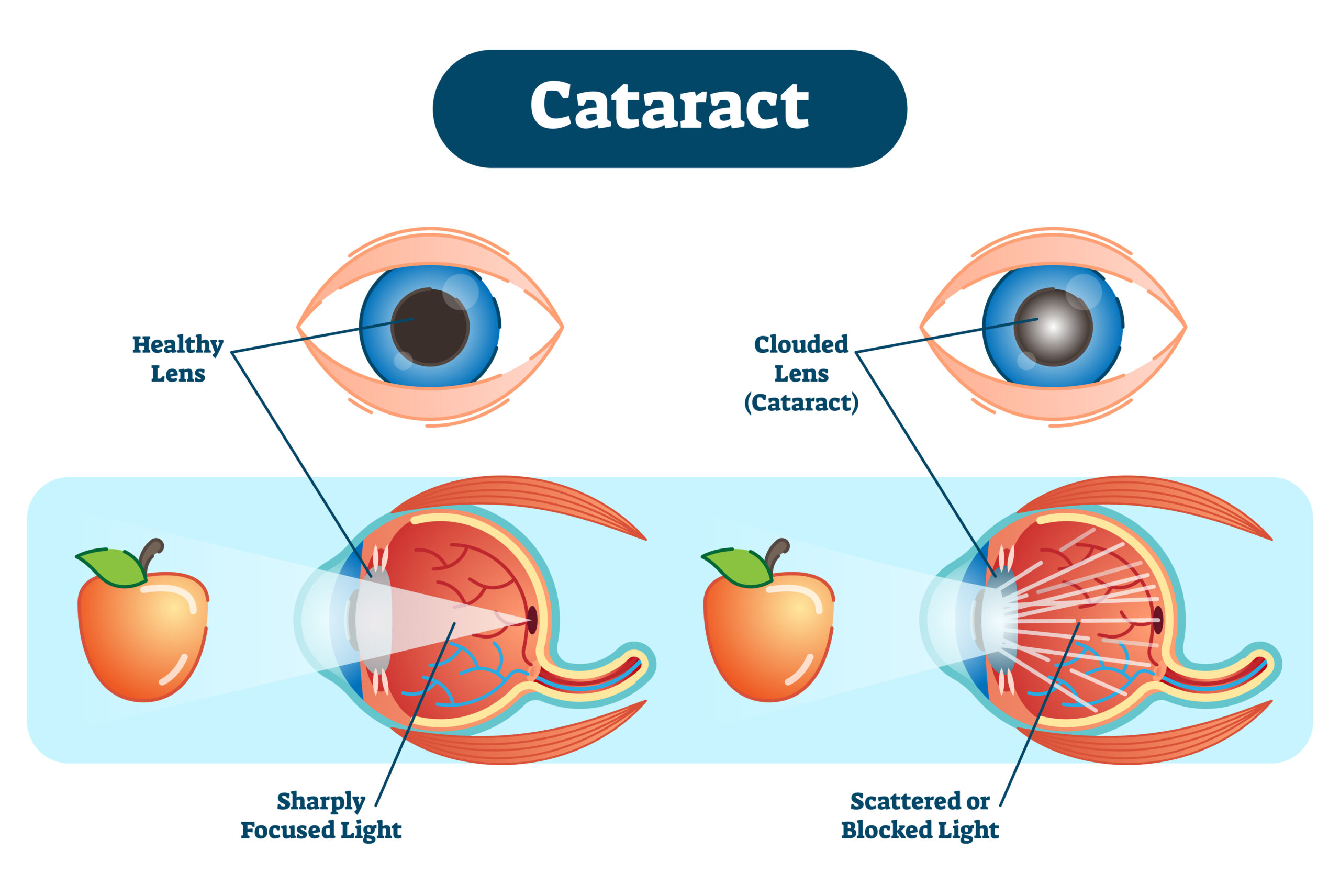
June is Cataract Awareness Month
The Signs and Symptoms and Treatment Options
Over 24 million Americans age forty and over are affected by cataracts, according to the American Academy of Ophthalmology. Cataracts develop primarily due to normal aging, however, the longer they are left untreated, the more difficult it can be to restore vision or avoid eventual blindness. The American Academy of Ophthalmology designates June as Cataract Awareness Month to raise awareness of the importance of early diagnosis and treatment of cataracts.
“Cataracts are a natural process of aging for many people, and the best way to avoid cataracts from developing is by taking a preventative approach and scheduling routine, comprehensive eye exams,” said Steven Rhee, D.O., cataract surgeon at Hawaiian Eye Center. “Cataracts occur when the normally clear lens of the eye becomes cloudy which can then cause blurry vision. If you begin to have blurred vision, sensitivity to light, fading or yellowing of colors, poor night vision, sensitivity to glare, or seeing a halo around bright lights, you should schedule an eye exam with your doctor,” says Dr. Rhee.
Of the potential causes of cataracts to develop, long-term exposure to ultraviolet light from the sun is one risk factor that can lead to developing cataracts. During the summer and on days that there is extra sun exposure and overcast weather, it is also important to wear sunglasses when spending time outdoors. Other risk factors for developing cataracts include a poor diet, smoking, diabetes, long-term steroid use, inflammation in the eye, family history, and serious eye injuries.
Cataracts are a serious health issue but fortunately are also very treatable. Cataract surgery is one of the safest and most common operations performed in the U.S. – the procedure involves removing the eye’s clouded lens and replacing it with an artificial lens implant. With modern cataract surgery, patients can usually upgrade the procedure to include vision correction to reduce dependency on glasses and contact lenses. Little pain or discomfort is reported from cataract removal, and surgery is typically outpatient.
Those forty and over should schedule a comprehensive dilated eye exam every two to three years with an eye care professional. Those forty and over with other risk factors or sixty and over should schedule annual exams.



Leave a Reply